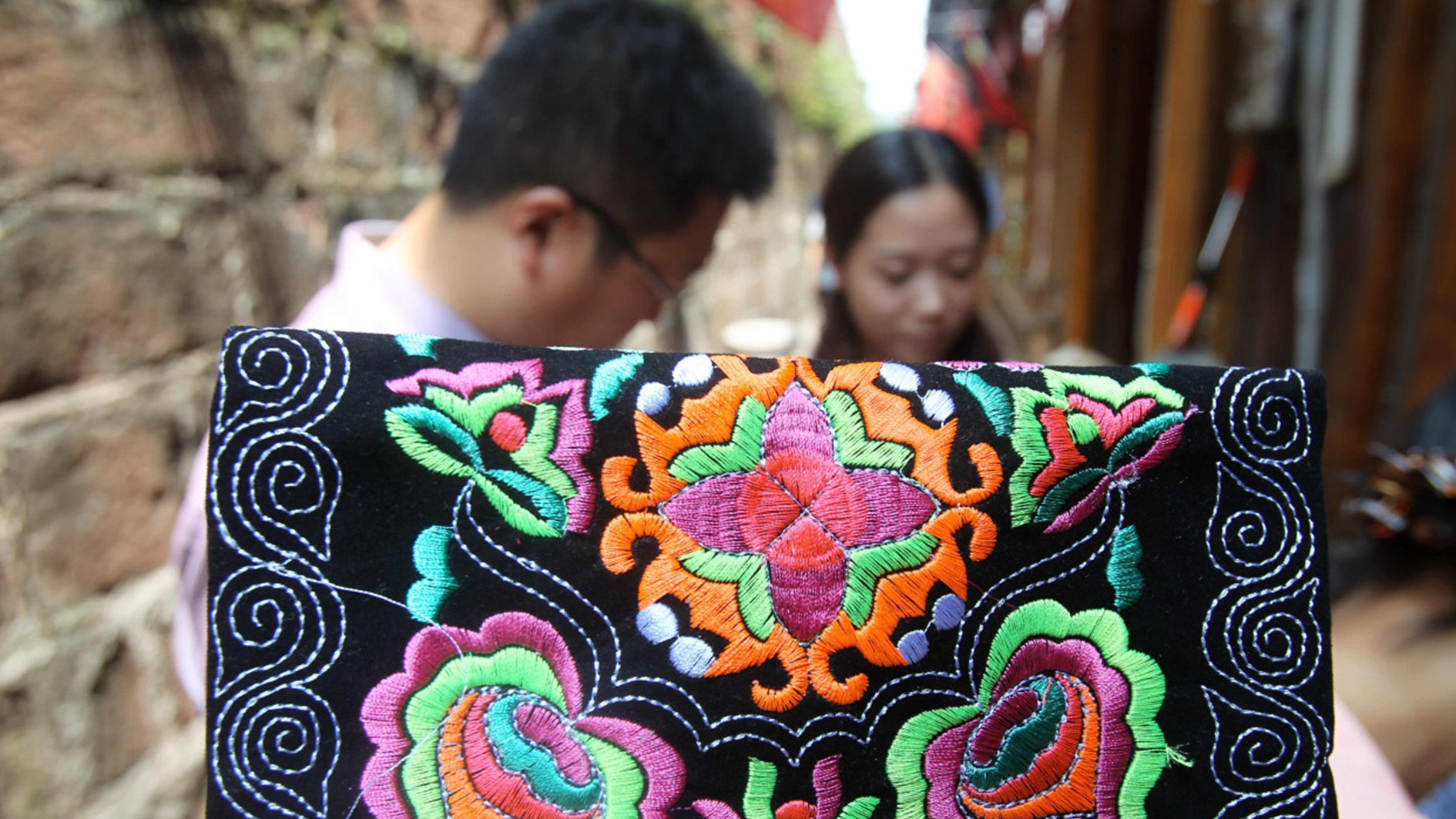
(Photo: CGTN)
The unique style of embroidery is considered an iconic part of China's Miao ethnic culture. In Huayuan County, central China's Hunan Province, the craftsmanship has helped boost the local economy.
It was rare to see the scene of young people working in the small town of Shilan until Miao embroidery was developed into a local industry. Shi Cuifan used to work out of town to make a better living, and returned home to join the embroidery project two years ago.
"I wasn't able to take care of the elderly when I was working in other cities. I'm so happy to come back to live with my children and have my parents around," she said.
Miao embroidery of Huayuan County was included in the first national intangible cultural heritage list in 2006, and local Miao women do have the skills. However, people couldn't make a living from it. More and more young people had to go out of town to work. Only kids and the elderly were left.
Things started to change in 2012 when local embroiderer Long Laoxiang participated in a Miao embroidery competition and won first prize. Her work fetched 18,000 yuan (around 2,500 US dollars) in the auction afterward. The local government then realized that Miao embroidery might help alleviate poverty in the area. To have senior embroiderers like Long back home to train more staff was key to the business. Many of them hesitated at first.
"I was invited four times before I made the decision to come back. Because I didn't know whether I could rely on it for a better living," said Long Zhiyin, a local embroiderer.
With the technical support of the senior embroiderers, and the fact that local Miao women are good at embroidering, the first Miao embroidery production workshop in the village started up at Long Laoxiang's residence. Customers started with friends and relatives, products developed from wedding suits to performing costumes, and 20 workshops like this one have been launched in just one year.
So far, the poverty alleviation project has hired more than 5,000 embroiderers, enabling people from more than 3,000 households to live with their beloved ones.


